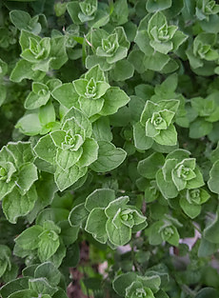Ahhh oregano! What a delightful aroma. Some say it has a camphoraceous odor, others a very pungent scent with spicy undertones. I am not familiar with a camphoraceous odor, therefore I lean more towards a very pungent aroma with a hint of mint. So how do you use oregano? And how do you grow it? Oregano has been added to dishes throughout the world and throughout the centuries. Read on to see how to grow oregano and understand why it is an international herb delight.
(Some of the links in this post are affiliate links on which I receive a small compensation from the sale of certain items with no extra cost to you.)
(As an Amazon Associate I earn from qualifying purchases.)
How to Grow Oregano
Oregano is easy to grow and care for. It can be grown from seeds, cuttings, or small plants transplanted into a pot or in the ground.
Seed/Start in Mid Spring
Purchasing seeds is easy with the internet at your fingers.
Once you get them, soak the seeds in warm water for 24 hours to speed up the germination process. After the 24 hours have passed, place them in a seed starting try on top of sterile, seed starting mix that was previously moistened with water. Be careful because the seeds are dust-like and it can be difficult to evenly space the tiny seeds. You can choose to cover them with cheesecloth until the plant pops up. Keep them at a temperature around 70 degrees Fahrenheit and the mix moist until they pop up. Once the plants peek through, keep the mix on the dry side.
Also, place them in a well lighted area.
Once planted in the tray it will take 7 to 14 days for the plants to germinate. At this point they can be transplanted as explained below.
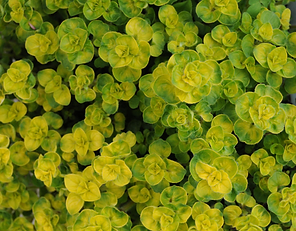
Cuttings
Cut off a stem 3 to five inches long (approximately 7 to 12cm) above a node with sterilized scissors or a knife. Strip off the bottom half of its leaves. Put the stem in water with the remaining leaves above the water line and place in a well lighted area, but not in direct sunlight. Replace the water every 2 to 3 days.
TIP!
Add a little organic honey to the water. Some growers have used it as a substitute for rooting hormones that conventional farmers use. It’s supposed to work fabulously! This process has not yet been documented. Perhaps try 2 stems, one in regular water and one in honey water. See which solution works best. Let me know the results if you try this experiment!
Once the roots are about one inch (2-3cm), transplant the oregano into a pot.
Oregano in Containers
(As an Amazon Associate I earn from qualifying purchases.)
If you are planting seedlings or small plants into a pot, (Amazon Outdoor Garden) be sure the pot you choose has a drainage hole. Oregano thrives in full sun but if you live in zone 7 or higher, be sure to place them where they receive some shade in the afternoon.
Plant the seedlings or small plants in a good, light potting mix that will drain well. Oregano does not like to be in heavy soil that retains a lot of water. You can rely on weekly rain for watering purposes. However, if drought-like conditions prevail, water them regularly. If the leaves are wilted, give the plant water.
Oregano can remain in the container for years. There is no need to purchase new plants if you just follow these instructions:
- harvest it often (see below), just as wild animals would if it was found in the forest
- prune it if you are not going to eat it; the new growth is the most tasty so give it frequent haircuts
- cut or pinch off buds before they flower; too many nutrients will go toward developing buds rather than leaves
- in the winter, the oregano will die down and almost look dead. This is the time to fork the soil with a pitch fork or metal skewers to add holes for water to penetrate. Add a good compost on top to add more nutrients to the soil.
Oregano in the Ground
Plant the oregano plants 12 inches apart. They need full sun unless in zone 7 or above where they will thrive in some afternoon shade. Supplement the soil if needed by adding some light organic soil to the garden, but make sure it is well drained. Oregano will not do well in a wet, boggy area. Oregano plants are hardy and forgiving, and can be planted in rock gardens or where drought conditions exist. Water the plant when the leaves are droopy.
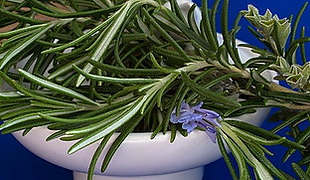
Companion Planting
Oregano (Click and Grow) can be planted with rosemary, sage, thyme, lavender, and marjoram. It is also a companion to certain vegetables such as peppers, cauliflower, parsnips, broccoli, beans, cabbage, cucumbers and brussel sprouts .
Oregano is susceptible to aphids, spider mites, and leafhoppers. By planting it near garlic, onions and/or chives, which naturally repel them, the oregano will be protected from these insects.
As a bonus, oregano repels mosquitos, cucumber beetles and cabbage butterflies.
Harvesting Oregano
Harvesting oregano is very easy. The most important thing to remember is to harvest it before it flowers and after it is 6 inches tall. If you wait until flowers form, the leaves will not be as flavorful.
TIP
Pinch off the buds you see that appear at the top to prevent flowers from forming.
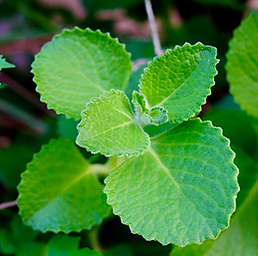
Using sterile kitchen scissors, follow down a stem and snip right above a joint of leaves called the node. You only want to harvest 20% of the plant. Leave the other 80% intact in order for it to produce more growth. Actually, the top parts of the stem are more tasty so you want to encourage more growth by using this method on them. Click below to view a video of how to harvest basil.
Once harvested, chop the oregano leaves to your desired size. Below is a video explaining the professional way to chop and/or mince oregano. Why not look like a pro?!
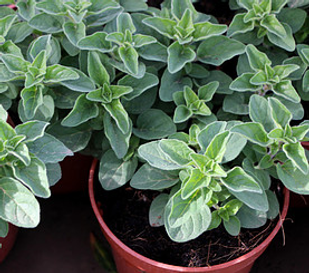
Preserving Oregano Through Freezing
Follow these instructions to freeze oregano leaves.
- harvest fresh, firm oregano leaves by following the above directions
- rinse clean and pat dry
- chop into smaller pieces
- place them into ice cube trays 2/3 of the way full
- pour extra virgin olive oil over herb and cover with plastic wrap
6. place in a freezer overnight
7. once frozen, pop them out and store them in a freezer bag. They will stay fresh up to 12 months in the freezer.
Dried Oregano
In addition to freezing oregano to preserve it, it’s also easy to dry out and store it in an air tight container. It will retain its strong pungent aroma for up to 6 months. After that the flavor will fade requiring you to add more to your favorite dish.
To dry oregano, simply break the leaves off a stem, wash them with water and pat them dry. Then lay them flat and not overlapping on a cookie sheet for a couple of days or until all the moisture from the leaves has evaporated. Then place them in an airtight container.
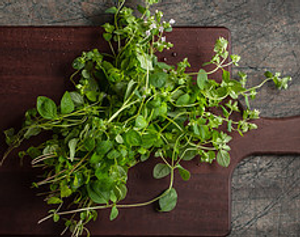
Some International History and Uses
Origins
Oregano is native to the Mediterranean hills and parts of western Asia. It is believed, that oregano originated in Greece. The word oregano comes from a Greek word “oros” meaning mountains and “ganos” meaning joy, or “joy of the mountain”. The ancient Greeks felt it was an herb created by the goddess Aphrodite. The Greeks also thought that when cows grazed in fields of oregano, it produced more tasty meat. Some scholars believe that it has been around since 3000 BC when it was used by the Assyrians during Roman and Greek times.
Since 3000 BC it has naturalized in Mexico and the United States.
Medicinal Value
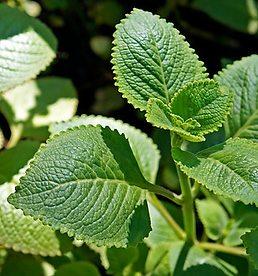
During the Greek and Roman times, oregano was commonly used for medicinal purposes. It is also used today for some common ailments.
Mainly, oregano is used and eaten to kill bacteria that cause infections in our bodies. It is known to kill 23 different kinds of bacteria.
It is also known to lower cholesterol levels by increasing good cholesterol and lowering bad cholesterol.
Oregano helps reduce inflammation and is known for helping people with heart conditions, diabetes, asthma, and the common flu.
Oregano oil (Herb Direct) to boost your immune system or used as a topical to combat nail fungus and muscle pain.
The oil has also been known to help sinus infections. It can be purchased at any health food store.
As always, consult your physician before injesting oregano for medicinal purposes.
An International Herb
Oregano, Origanum vulgare, is a perennial herb of the mint family, Lamiaceae. It can be used in your favorite dishes, and/or for ornamental uses. Some varieties produce tall stems of pink, purple or white flowers. and are used for centerpieces.
There are numerous varieties of oregano. The most common variety is Greek oregano. It is mainly used in Mediterranean dishes. This variety is what you will mostly find at supermarkets.
Other varieties include Syrian Oregano, Golden Oregano, Italian Oregano, Cuban Oregano, and Mexican Oregano.
Simple, Homemade Recipe
I use dried Greek oregano, (the common variety), to make delicious pasta sauce with Italian sausage. Below is my secret recipe for making delicious sauce!
Ingredients:
- 4- 28 oz. cans of Tuttorosso Peeled Plum Tomatoes lightly blended in a blender
- 1 heaping tablespoon dried basil (refer to How to Grow Basil Plants) OR 10 to 14 leaves of fresh basil finely chopped
- 1 teaspoon black pepper
- 1 package combined Italian sausage, 3 sweet Italian and 2 hot
- 1 heaping tablespoon dried oregano
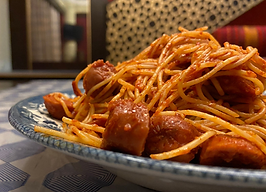
- 1 heaping tablespoons minced garlic
- water
- package of pasta
- fresh Romano or parmesan cheese
Directions:
- Lightly blend the 4 cans of peeled tomatoes and add to a large pot
- Sprinkle with dried basil (or fresh, see above) and black pepper; stir well; simmer for at least 30 minutes stirring occasionally
- Add sausage to frying pan
- Sprinkle evenly with dried oregano and garlic
- Add water to almost cover the sausage
- Bring pan ingredients to a boil
- Turn heat to medium low and cook for 10 minutes, turn sausage and cook for another 10 minutes
- DO NOT ALLOW WATER TO BOIL OFF! ADD MORE IF NECESSARY
- After the second turn of the sausage, poke the sausage with a fork to allow the juices to be released into the drippings
- Cook another 10 minutes
- Let the drippings cook down to a quarter of an inch
- Place sausage and drippings into the pot of tomatoes
- Simmer for at least 2 hours with the lid half off
- Stir occasionally
- Serve over your favorite pasta
- Garnish with Romano or Parmesan cheese
This should make 1 meal for 4 people with extra sauce leftover.
Easy Oregano
Oregano is a very easy herb to plant, grow, care for, and enjoy. Follow the above tips and I’m confident you will grow the best oregano in town.
Please leave a comment below. Let me know if you tried my secret recipe for pasta sauce. I’d love to hear from you!

Happy Gardening,
Nina
bestgardeningforbeginners@gmail.com
www.bestgardeningforbeginners.com

